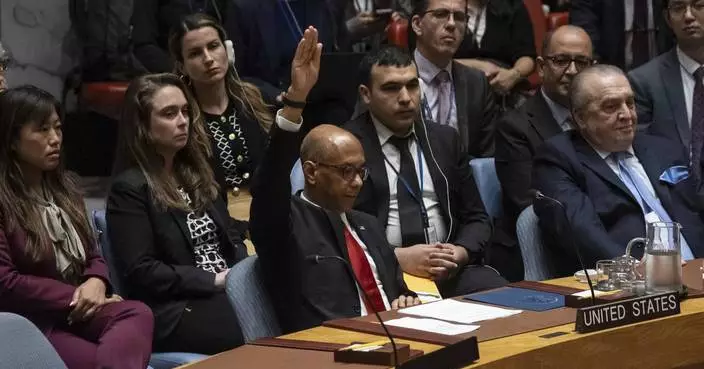An appeals court on Friday told a judge to take another look at whether a Montana fish should be protected, saying that U.S. wildlife officials did not consider all environmental factors when it decided against designating the Arctic grayling as a threatened or endangered species.
The three-judge panel of the 9th U.S. Circuit Court of Appeals reversed U.S. District Judge Sam Haddon's 2016 ruling that the U.S. Fish and Wildlife Service's decision not to list Montana's Arctic grayling as threatened or endangered was based on the best available science.
Wildlife officials' conclusion that the grayling population was increasing was wrong because they did not take into account data that showed the fish's population in the Big Hole River was declining, the judges said in their decision.
The federal agency also acted arbitrarily and capriciously in dismissing the threats of high stream temperatures, low stream flows and climate change to the grayling population, the judges ruled.
Those factors put grayling in Montana in danger of extinction, said Jenny Harbine, an attorney for the Center for Biological Diversity, which sued force federal protections for the fish.
"The service had blown off the threat to grayling from warmer water temperatures, but the court found they had no legitimate reason to do so," Harbine said. "Arctic grayling are a cold water fish but as we know increasing summer temperatures, earlier spring runoff and reduced snow pack have impacted the water temperatures in almost all of Montana's rivers."
The wildlife advocacy group says in its lawsuit that climate change will only make conditions worse without federal protections in place. Those protections would restrict land and water use in and around the grayling's habitat.
Fish and wildlife service spokeswoman Jennifer Strickland said her agency is reviewing the ruling and has no comment.
Arctic grayling, a relative of trout known for their sail-like dorsal fin, are also found in Alaska and Canada, but the court case only affects the fish's Montana population. In Montana, grayling now occupy just 10 percent of the 1,250 miles (2,011 kilometers) of streams in the upper Missouri River basin that they historically inhabited.
In 2010, the fish and wildlife service determined that that Arctic grayling in Montana warranted federal protection, but other species took precedence. Four years later, they said the fish did not warrant listing as threatened or endangered because additional populations had been found and nearly all were stable or improving.
The 2014 decision also factored in a state program that worked with landowners to improve water flows and fish habitat along the Big Hole River, where irrigation had threatened one of the grayling's last refuges in the state. Gov. Steve Bullock, a Democrat, then touted the program and keeping the grayling off the endangered species list as a success story.
Montana Fish, Wildlife and Parks spokesman Greg Lemon did not immediately return a telephone message seeking comment on the court ruling.
AP writer Matthew Brown in Billings, Montana, contributed to this report.
TOKYO (AP) — The American envoy to the United Nations called Friday for countries armed with atomic weapons to pursue nuclear disarmament as she visited the atomic bomb museum in Nagasaki, Japan.
Linda Thomas-Greenfield, who became the first U.S. cabinet member to visit Nagasaki, stressed the importance of dialogue and diplomacy amid a growing nuclear threat in the region.
“We must continue to work together to create an environment for nuclear disarmament. We must continue to prevent the spread of nuclear weapons in every corner of the world,” she said after a tour of the atomic bomb museum.
“For those of us who already have those weapons, we must pursue arms control. We can and must work to ensure that Nagasaki is the last place to ever experience the horror of nuclear weapons,” she added, standing in front of colorful hanging origami cranes, a symbol of peace.
The United States dropped the world’s first atomic bomb on Hiroshima on Aug. 6, 1945, destroying the city and killing 140,000 people. A second attack three days later on Nagasaki killed 70,000 more people. Japan surrendered on Aug. 15, ending World War II and its nearly half-century of aggression in Asia.
Nagasaki Gov. Kengo Oishi said in a statement that he believed Thomas-Greenfield's visit and her first-person experience at the museum “will be a strong message in promoting momentum of nuclear disarmament for the international society at a time the world faces a severe environment surrounding atomic weapons.”
Oishi said he conveyed to the ambassador the increasingly important role of Nagasaki and Hiroshima in emphasizing the need of nuclear disarmament.
Thomas-Greenfield's visit to Japan comes on the heels of Prime Minister Fumio Kishida's official visit to the United States last week and is aimed at deepening Washington's trilateral ties with Tokyo and Seoul. During her visit to South Korea earlier this week, she held talks with South Korean officials, met with defectors from North Korea and visited the demilitarized zone.
The ambassador said the United States is looking into setting up a new mechanism for monitoring North Korea's nuclear weapons program. Russia and China have thwarted U.S.-led efforts to step up U.N. sanctions on North Korea over its ballistic missile testing since 2022, underscoring a deepening divide between permanent Security Council members over Russia’s war on Ukraine.
She said it would be “optimal” to launch the new system next month, though it is uncertain if that is possible.
The U.N. Security Council established a committee to monitor sanctions, and the mandate for its panel of experts to investigate violations had been renewed for 14 years until last month, when Russia vetoed another renewal.
In its most recent report, the panel of experts said it is investigating 58 suspected North Korean cyberattacks between 2017 and 2023 valued at approximately $3 billion, with the money reportedly being used to help fund its weapons development.
The United States, Japan and South Korea have been deepening security ties amid growing tension in the region from North Korea and China.
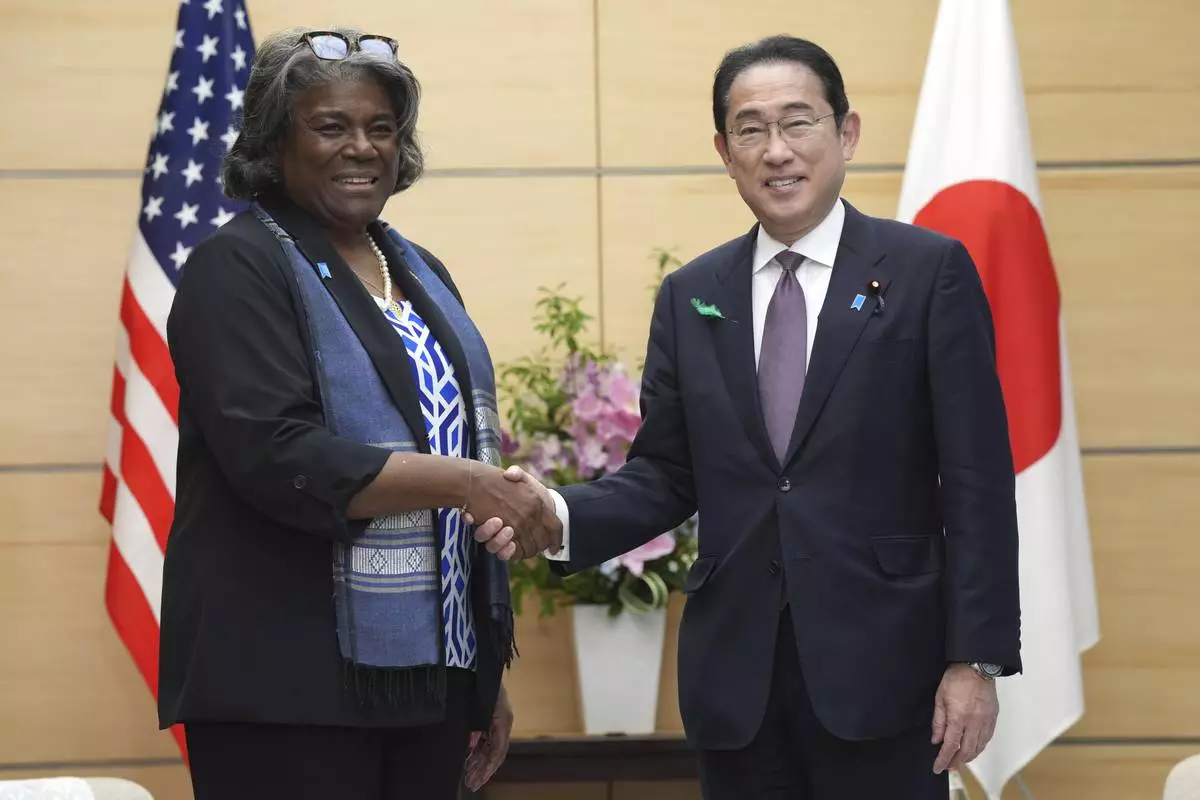
U.S. Ambassador to United Nations Linda Thomas-Greenfield, left, and Japan's Prime Minister Fumio Kishida, right, shake hands during a meeting Friday, April 19, 2024, at prime minister's office in Tokyo. (AP Photo/Eugene Hoshiko, Pool)

U.S. Ambassador to United Nations Linda Thomas-Greenfield, left, and Japan's Prime Minister Fumio Kishida, right, shake hands during a meeting Friday, April 19, 2024, at prime minister's office in Tokyo. (AP Photo/Eugene Hoshiko, Pool)
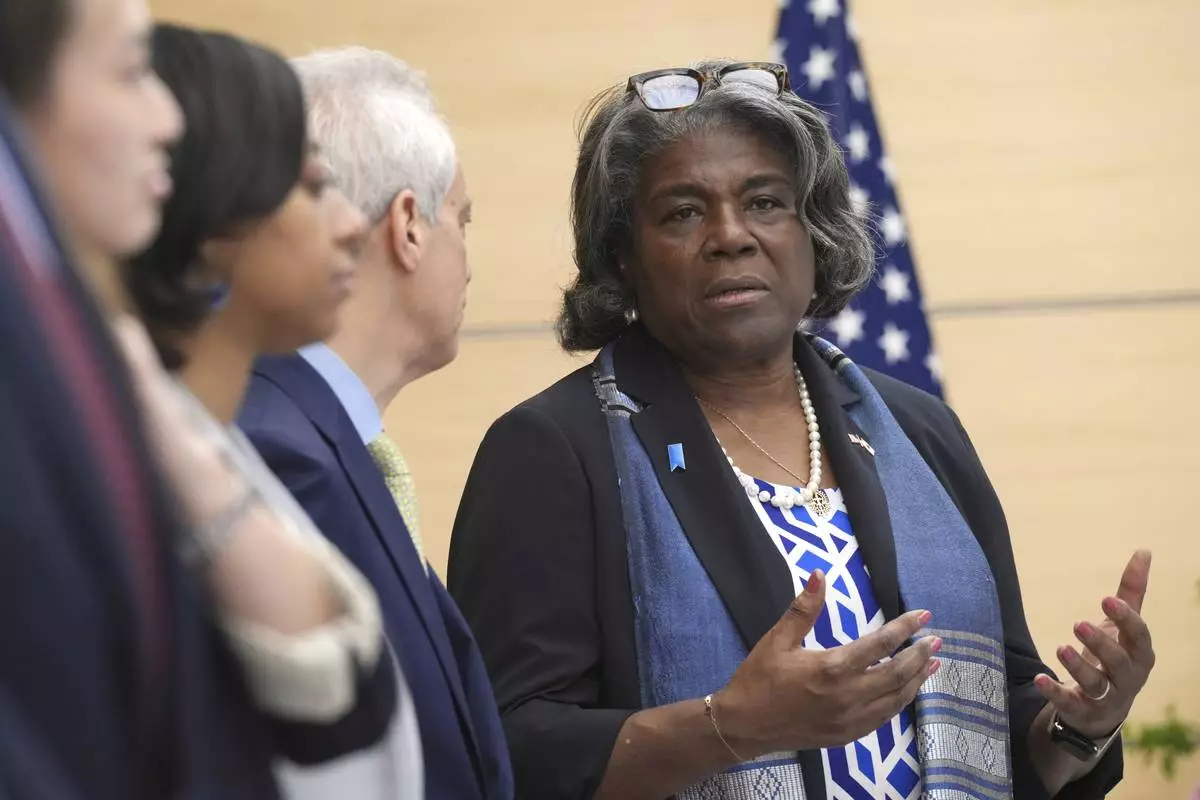
U.S. Ambassador to United Nations Linda Thomas-Greenfield, right, speaks to Rahm Emanuel, U.S. Ambassador to Japan, second right, as they wait for a meeting with Japan's Prime Minister Fumio Kishida Friday, April 19, 2024, at prime minister's office in Tokyo. (AP Photo/Eugene Hoshiko, Pool)
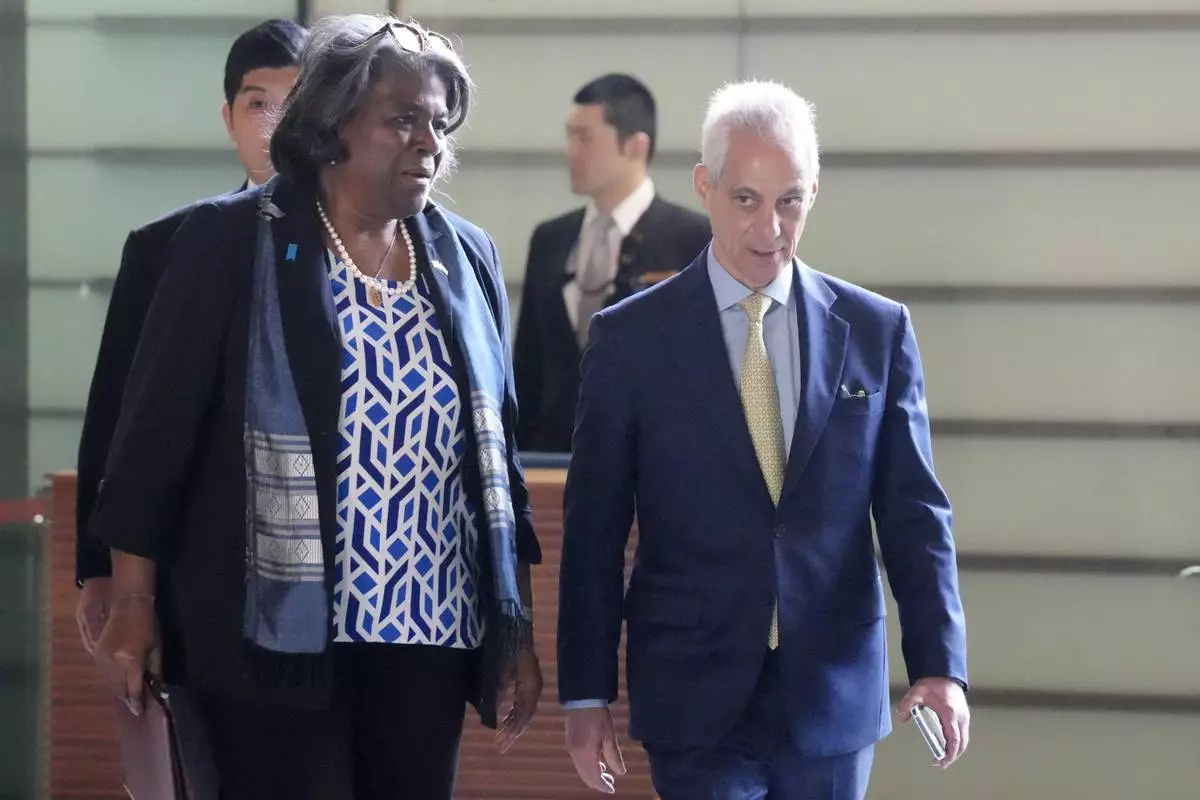
U.S. Ambassador to United Nations Linda Thomas-Greenfield, left, and Rahm Emanuel, U.S. Ambassador to Japan, right, walk to meet Japan's Prime Minister Fumio Kishida Friday, April 19, 2024, at prime minister's office in Tokyo. (AP Photo/Eugene Hoshiko, Pool)
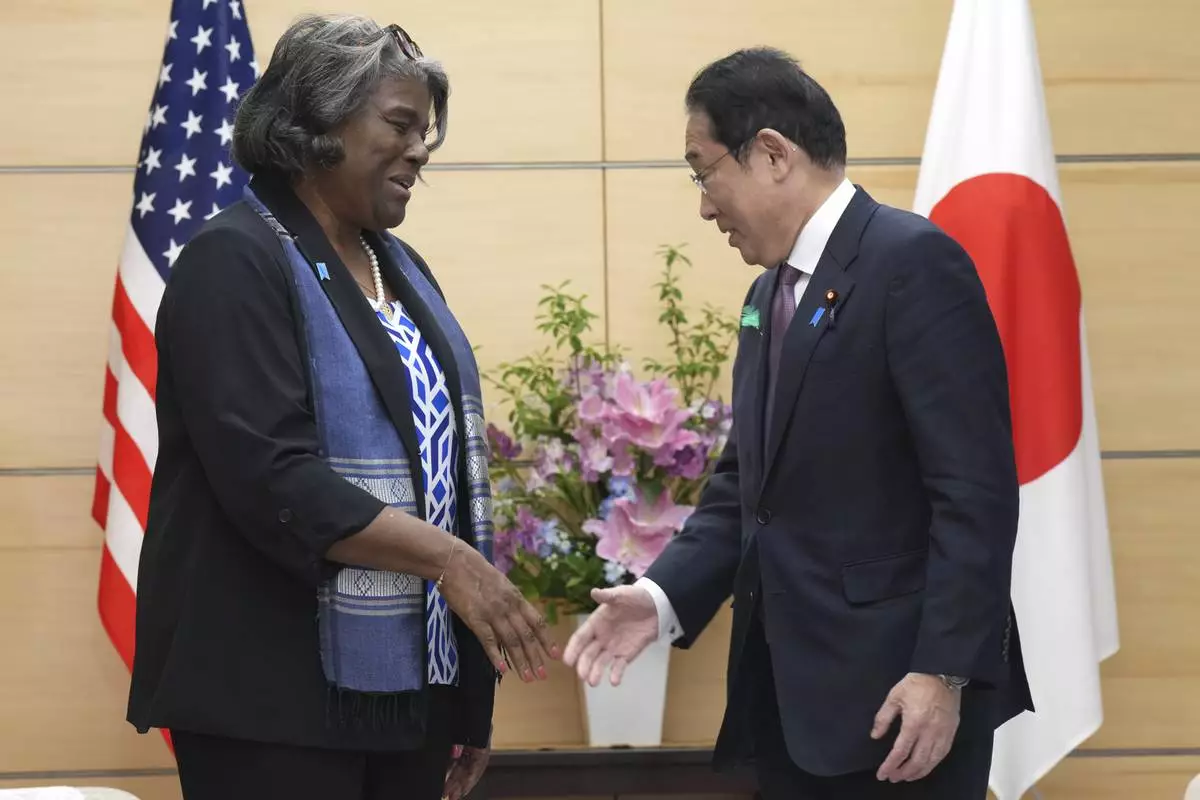
U.S. Ambassador to United Nations Linda Thomas-Greenfield, left, and Japan's Prime Minister Fumio Kishida, right, talk prior to a meeting Friday, April 19, 2024, at prime minister's office in Tokyo. (AP Photo/Eugene Hoshiko, Pool)
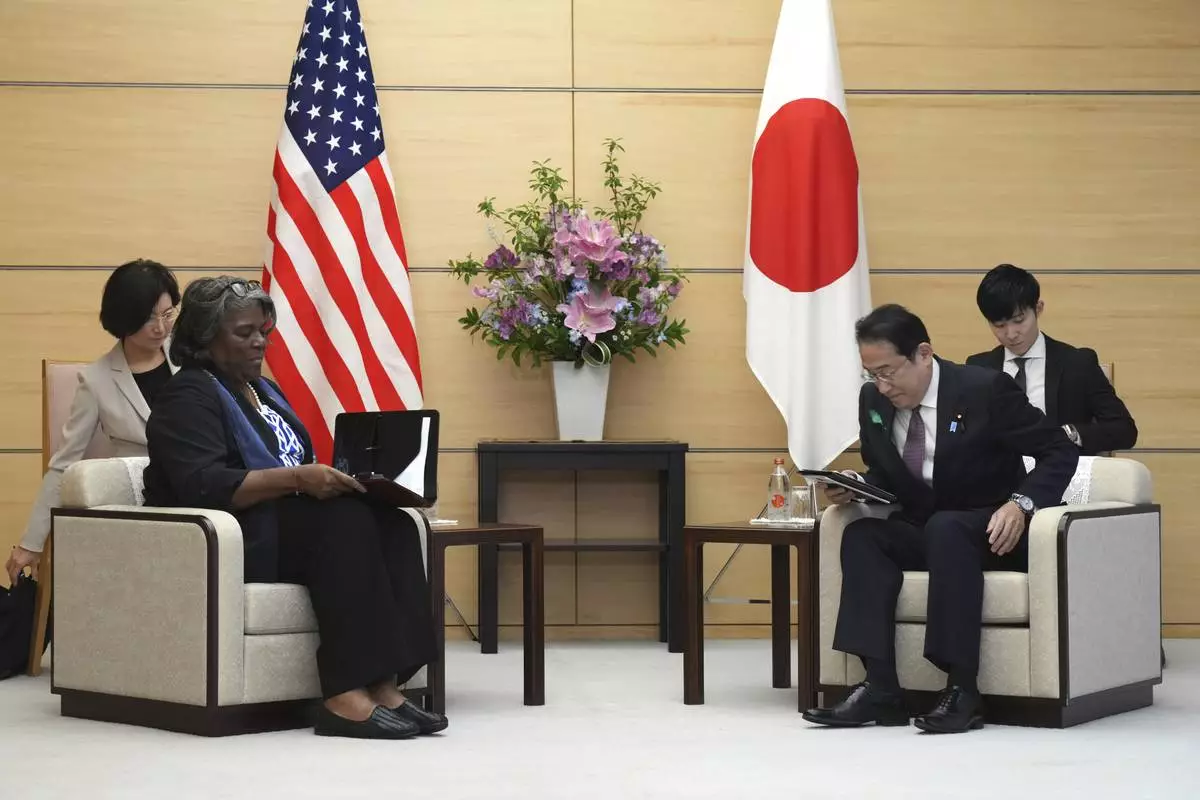
U.S. Ambassador to United Nations Linda Thomas-Greenfield, left, and Japan's Prime Minister Fumio Kishida, right, prepare to talk during a meeting Friday, April 19, 2024, at prime minister's office in Tokyo. (AP Photo/Eugene Hoshiko, Pool)










